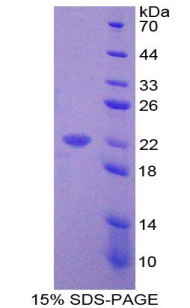Recombinant Vitamin D Receptor (VDR) 

NR1I1; Nuclear Receptor Subfamily 1 Group I Member 1; Calcitriol Receptor; 1,25-dihydroxyvitamin D3 receptor
Overview
Properties
- Product No.RPA475Mu01
- Organism SpeciesMus musculus (Mouse) Same name, Different species.
-
Applications
Positive Control; Immunogen; SDS-PAGE; WB.
If bio-activity of the protein is needed, please check active protein.
Research use only - DownloadInstruction Manual
- CategoryMetabolic pathwayEndocrinology
- Source Prokaryotic expression, Host E.coli
- Endotoxin Level<1.0EU per 1µg (determined by the LAL method)
- Subcellular LocationSecreted
- Molecular Mass 21.8kDa, Accurate 22kDa(Analysis of differences refer to the manual)
- Residues & TagsIle266~Ser422 with N-terminal His Tag
- Buffer Formulation20mM Tris, 150mM NaCl, pH8.0, containing 1mM EDTA, 1mM DTT, 0.01% SKL, 5% Trehalose and Proclin300.
- Traits Freeze-dried powder, Purity > 97%
- Isoelectric Point6.5
Share your citation
Upload your experimental result
Review
Leave a message
Loading...
Sign into your account
Share a new citation as an author
Upload your experimental result
Review
Please attach serial No. on instruction manual


Contact us
Please fill in the blank.
Name*
Organization
Address
E-mail address*
Telephone
Inquiry*
Verification code*

Sequence

Usage
Reconstitute in 20mM Tris, 150mM NaCl (pH8.0) to a concentration of 0.1-1.0 mg/mL. Do not vortex.
Storage
Avoid repeated freeze/thaw cycles. Store at 2-8°C for one month. Aliquot and store at -80°C for 12 months.
Stability
The thermal stability is described by the loss rate. The loss rate was determined by accelerated thermal degradation test, that is, incubate the protein at 37°C for 48h, and no obvious degradation and precipitation were observed. The loss rate is less than 5% within the expiration date under appropriate storage condition.
Increment services
-
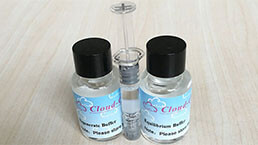 Endotoxin Removal Kit
Endotoxin Removal Kit
-
 BCA Protein Quantification Kit
BCA Protein Quantification Kit
-
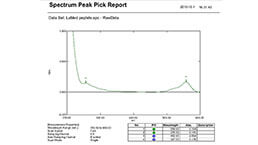 Protein Labeling Customized Service
Protein Labeling Customized Service
-
 Molecular Mass Marker for Protein
Molecular Mass Marker for Protein
-
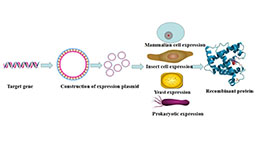 Recombinant Protein Customized Service
Recombinant Protein Customized Service
-
 Monoclonal Antibody Customized Service
Monoclonal Antibody Customized Service
-
 Polyclonal Antibody Customized Service
Polyclonal Antibody Customized Service
-
 Protein Activity Test Experiment Service
Protein Activity Test Experiment Service
-
 Immunoprecipitation (IP) Experiment Service
Immunoprecipitation (IP) Experiment Service
-
 Buffer
Buffer
-
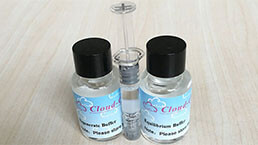 Endotoxin Removal Kit II
Endotoxin Removal Kit II
-
 Real Time PCR Experimental Service
Real Time PCR Experimental Service
-
 Spike RBD Protein (S-RBD)
Spike RBD Protein (S-RBD)
-
 Protein G
Protein G
-
 Protein A
Protein A
Citations
- The vitamin D receptor: A therapeutic target for the treatment of breast cancer?Cgi: Content
- Vitamin D receptor as a target for breast cancer therapy.pubmed:28213567
- Effect of exercise on serum vitamin D and tissue vitamin Dreceptors in experimentally induced type 2 Diabetes Mellitus.pubmed:27504197
- Vitamin D supplementation attenuates oxidative stress in paraspinal skeletal muscles in patients with low back painPubmed:29143122
- Enhanced remedial effects for vitamin D3 and calcium co-supplementation against pre-existing lead nephrotoxicity in mice: The roles of renal calcium homeostatic …Pubmed: 30553018
- Seluang Fish (Rasbora Spp.) Oil Decreases Inflammatory Cytokines Via Increasing Vitamin D Level in Systemic Lupus Erythematosus
- Status of vitamin D and the associated host factors in pulmonary tuberculosis patients and their household contacts: a cross sectional studyPubmed: 31255688
- Association of Fok1 VDR polymorphism with Vitamin D and its associated molecules in pulmonary tuberculosis patients and their household contactsPubmed: 31649297
- Vitamin D Status in Dupuytren's Disease: Association with Clinical Status and Vitamin D Receptor Expression
- Betok Fish (Anabas testudineus) Oil Decreases Inflammatory Cytokine through Increasing Vitamin D Level in Rats-induced Systemic Lupus Erythematosus
- Positive Correlation between Monocyte-to-Lymphocyte Ratio and C-Reactive Protein in Vitamin D Deficient Preterm Infants with Respiratory Distress Syndrome
- Identification of SNP of VDR and VDBP gene and its Dysregulated pathway through VDR-VDBP interaction network analysis in Vitamin D deficient Infertile …





